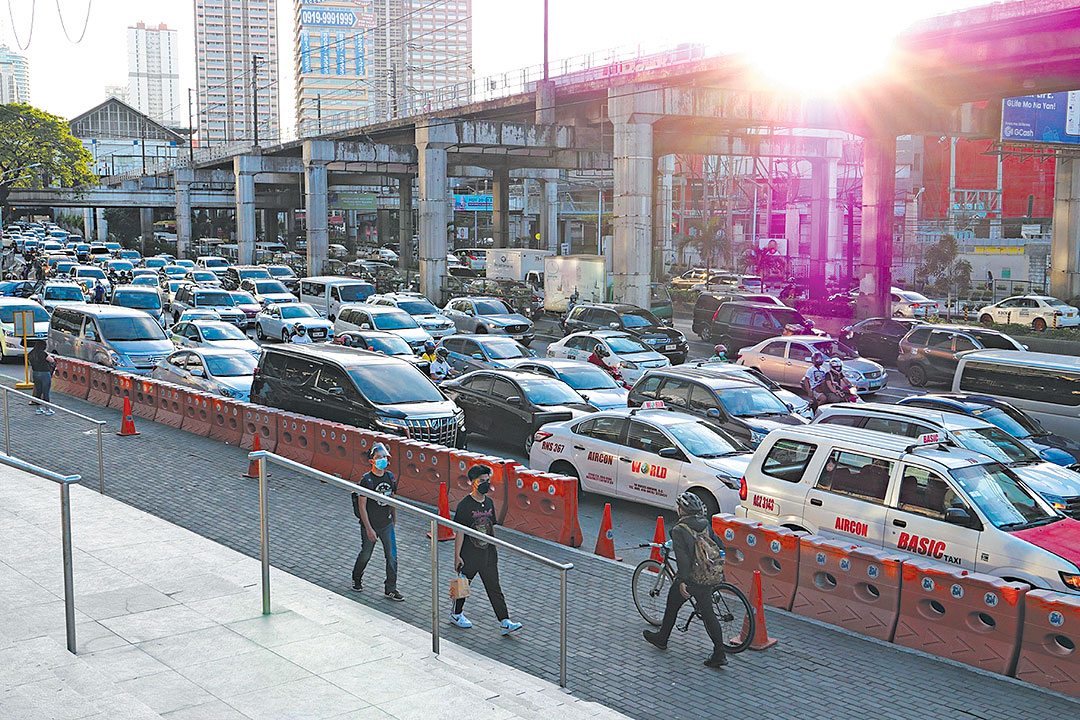
Talk Box
By Kap Maceda Aguila

I’VE OFTEN heard about how the days are long, but the years short.
That perennially dawns on me every time this international coffee chain starts to offer its yuletide creations — along with the stickers toward getting a spiffy new planner. It’s actually emblematic of the pandemic times we live in; the stickers these days aren’t even physical ones anymore but digital icons you save on an app (for increased safety, said a barista to me from behind a plexiglass stand).
Personally, 2020 has been (thankfully) largely a blur of articles, auto events (many of which were again held online), Zoom meetings and interviews, and launches. While there were a handful of physical activities, on the whole it was still about social distancing, diminished capacity, and a near compulsive adherence to health protocols. And that should be the case when you’re up against a deadly, invisible enemy that’s also an opportunist.
Aside from this, the new normal for covering our beat in the flesh (as I suspect to be the case in other fields as well) is a swift jab in the nose for a PCR (polymerase chain reaction) test. Of course, it’s not a very pleasant experience but, at least, testing helps to allay some fears about gatherings.
As in 2020, local auto brands weren’t thwarted from unveiling new models. In fact, we’ve been to quite a few that we’ve discerned an evolution of the modern car launch from a physical event, to a digital form, and now to a “hybrid” one.
Car launches have ceased to be purely in-person events which may be livestreamed or subsequently uploaded onto YouTube or Facebook. They are now, for the most part, primarily digital shows hosted on the aforementioned platforms. On the whole, this is actually good as more people get to join in the fun in real time. What we get less of are incisive stories or unique photos/videos of the event as a product of your favorite journos jostling for that elusive perfect shot, and seeking quotes from an auto executive.
What we’ve seen lots of lately are hybrid events involving a physical setup of vehicles and an in-person host joined by auto officials — streamed to remote guests (usually members of the media). This is a more controlled, focused form that I suspect will be the norm while we’re still in the midst of the pandemic.
BACK IN BUSINESS
All of this is gravy, of course, to what we all should really be taking a look at — how the auto industry is faring these days. Much ink was spilled last year on what executives were expecting from 2021. It’s supposed to be a “recovery year,” but there’s certainly an asterisk to that term; it’s easy to realize growth when you’re coming from 2020’s rock-bottom state.
I reached out to Autospeedygo Group Vice-Chairman and COO Vincent Licup, who happily reported, “My group experienced a 50% increase in sales from 2020 versus 2021 since the quarantine measures were lifted. We all expected growth after businesses opened up — but remember that we’re comparing figures since the pandemic began, not 2019 performance.”
Mr. Licup observed that “banks started to support retail financing, and the approval rate has been very, very high,” spelling good news for people seeking personal mobility. Ultimately, this is good news for the industry as well.
Lexus Manila President Raymond Rodriguez concurred. The luxury marque, he shared with me, did “much better” versus 2020. “Based on the first 10 months of performance, there has been growth for the industry — as with Lexus. Our YTD sales of 448 units translate to 22% growth compared to the same period last year. I would assume that other brands also experienced positive figures this year versus 2020.”
But again, there’s a caveat. “Although 2021 was a better year, there is still a lot of catching up if we are to compare it with 2019, the pre-COVID year,” declared Mr. Rodriguez.
Still, baby steps are better than staying put. “There were more working days this year, because we had longer lockdowns in 2020. This resulted in an increase in units being serviced in our workshop, plus the customers who visited our showroom,” continued the executive. “We also introduced a number of new models and hybrid variants which are selling very well. Our LM 350 van continues to be the best-selling product in our lineup, and accounts for up to 50% of our sales.”
BETTER NUMBERS, BUT
Heartening is the fact that last November saw the largest monthly tally of vehicles sold in 2021, per the consolidated report of the Chamber of Automotive Manufacturers of the Philippines (CAMPI) and Truck Manufacturers Association (TMA). The 26,456 units moved represent a healthy 17.2% increase versus October’s 22,581 units. The YTD growth is even more impressive — 240,642 vehicles sold or 22.7% above the same period in 2020.
“While we did much better compared to last year, it’s still far from pre-pandemic performance,” underscored Autohub Group President Willy Tee Ten. He noted to me that the global shortage of chips and other spare parts impacted the production of vehicles, adding, “We have very few units to sell of the vehicles in demand.”
While he echoes the observation of Mr. Licup, saying that “banks were approving more loans compared to last year,” Mr. Tee Ten asserted, “We need them to be more aggressive. The higher down payment sums needed for some models are affecting sales as well.”
Mr. Tee Ten, who also is president of the Philippine Automotive Dealerships Association (which represents more than 100 dealerships), rued that even as business is not yet quite up to speed, the lease of facilities “are still the same or sometimes even higher. This expense will affect the bottom line until sales go up.” He expressed hope that the aforementioned issues will find resolution next year.
Another fervent wish for Mr. Tee Ten is “for vaccine companies to prioritize developing countries more.” He noted that cases shot up in the earlier part of the year — eventually going down in the fourth quarter owing to increased vaccinations. “If these had come earlier, our economy would have been revived sooner.”
He described his own Autohub Group, which counts more than 20 automotive marques under its wing, as being “on survival mode.” Still, Mr. Tee Ten and company added more brands like Mitsubishi and Suzuki, in a bid “to make up for the lower volume for all brands.”
Of note, the executive said, “The bright spot for Autohub has been our two-wheel business, specifically Vespa and Triumph, which had posted sensational growth during this pandemic. In the four-wheel segment, Geely had great growth for us this 2021.”
HIGH HOPES
What can we expect in 2022, then? Is it even realistic to dare to dream of even better numbers?
Willy Tee Ten certainly thinks so. “We hope that 2022 will promise close to, or even better than, 2019’s volume. I hope that the Omicron variant will not prove to be a major issue,” he said.
For Vincent Licup, the pandemic brought forth not just woes but opportunities (and some perspective). “I think that in 2022, we will get a lot better — probably back to 2019 figures. One thing that the pandemic opened up was the selling channels. Now we have online and face-to-face selling channels. We dealers have to use that to our advantage. Filipinos will continue buying cars. It’s both a necessity and a lifestyle. With more roads built the past years, what better way to enjoy those than with cars, right?” he shared.
“I expect 2022 to be much better than 2021,” opined Raymond Rodriguez. “Based on the latest forecast, 2022 promises a strong rebound — mainly due to the decline of the pandemic, and more people getting vaccinated. We also expect the economy to be more fully reopened by then, while noting the government’s target of 7%-9% growth — compared to the 4%-5% forecasted this year.”
All the positivity is certainly welcome psychic momentum as we greet the new year. Yes, kind of like a cup of coffee that warms the hands and soul as we face whatever kind of day is ahead of us.